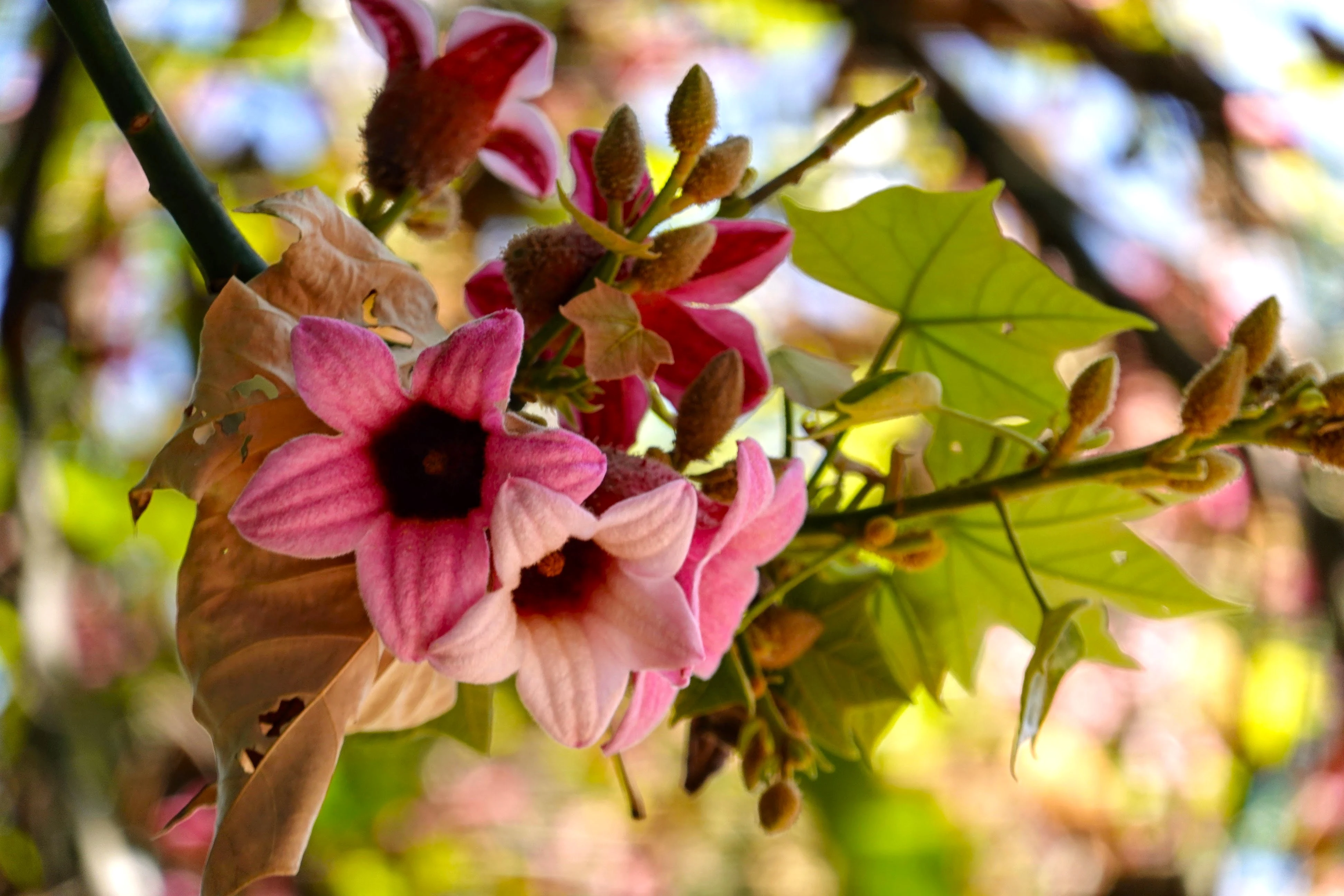I always seem to be attracted to the same plants. Although I wrote a post on the Lacebark Tree in 2020, the source of the information was not indicated in the post and some information looked questionable so I searched the information again. Lacebark Tree is a rainforest tree of eastern Australia and is widely planted as an ornamental tree. Roasted seeds are edible.
我似乎常被同一種植物吸引住。雖然在2020年寫了一篇星花酒瓶樹的貼子,由於沒有標明資料來源,有些地方看起來有疑問,所以又重新找了資料。這種澳大利亞東部的熱帶雨林樹常用來觀賞用。種子烤了可以食用。中文名有星花酒瓶樹或澳洲蘋婆之稱。
Photo Date: 2019.07.16 Location: LA Arboretum


Photo Date: 2020.07.21 Location: LA Arboretum




Photo Date: 2022.09.20 Location: LA Arboretum




Notes 筆記
- Lacebark Tree (Brachychiton discolor) is a rainforest tree of eastern Australia.
- Genus name ‘Brachychiton’ comes from the Greek words ‘brachy’ meaning “short” and ‘chiton’ meaning a “tunic” in reference to the seed coating. The specific epithet ‘discolor’ is the Latin word meaning “two different colors”, likely in reference to the two distinct colors in the leaves. Other common names include Scrub Bottle Tree, in reference to the notable mid-trunk bulge that is likened to the shape of an old-fashion soda bottle, Hat Tree, in reference to the flower shape, Australian Sycamore, for it sycamore like leaves, Queensland Lacebark for the lattice-like pattern of the furrowed bark. Brachychiton are often called Kurrajong in Australia and there this tree is sometime called Lacebark Kurrajong or White Kurrajong.
- Lacebark trees are so called due to the markings on the bark, especially as the tree ages, and they are also known as ‘scrub bottle trees’, ‘pink flame trees’, ‘hat trees’, ‘Queensland lacebarks’, ‘sycamores’, ‘pink kurrajongs’, ‘white kurrajongs’, ‘lace kurrajongs’ ‘lacebark kurrajongs’ and ‘bush kurrajongs’.
- Leaves are hairy; lobed in three, five or seven points. The flowers are pink, almost without stalks. The fruit is a hairy boat shaped follicle.
- It is widely planted as an ornamental tree. Wood used as shields by Indigenous Australians.
- The seeds of lacebark trees can be eaten when roasted, either ground into a flour or consumed without modification. The flowers and roots may also be eaten. The hairs in the pods can cause irritation to human skin.
- 星花酒瓶樹是澳大利亞東部的一種熱帶雨林樹。
- 屬名 “Brachychiton” 來自希臘語 “brachy” ,意為“短”,“chiton” 意為“外衣”,指種子包衣。它的種小名“變色”是拉丁語,意思是“兩種不同的顏色”,可能是指葉子中兩種不同的顏色。其他常見的俗名包括灌木叢瓶樹,指的是中間鼓起的大軀幹,類似於老式汽水瓶的形狀。帽子樹,指的是花朵形狀。澳大利亞梧桐,因為它的葉子像梧桐的葉子一樣。昆士蘭星花酒瓶樹因為它有格子型溝狀樹皮。瓶幹樹在澳大利亞通常被稱為異葉瓶木,這種樹有時被稱為星花酒瓶異葉瓶木 或 白色異葉瓶木。
- 星花酒瓶樹的名稱源於樹皮上的標記,尤其是隨著樹齡的增長。它們也被稱為灌木瓶樹,粉紅色火焰樹,帽樹,昆士蘭星花酒瓶樹、澳洲蘋婆。
- 葉子有毛; 分三尖頭、五尖頭或七尖頭。 花是粉紅色的,幾乎沒有莖。 果實是一個毛茸茸的船形袋果。
- 廣泛種植作為觀賞用。 澳大利亞土著把它的木材來作盾牌。
- 種子烤了可供食用,直接吃或磨成麵粉均可。花和根也都能吃。而豆莢中的毛會使人體皮膚不舒服。
References 參考資料
- Wikipedia: Brachychiton discolor
- San Marcos Growers: Brachychiton discolor - Pink Flame Tree
Plants Posts 植物的帖子
Comments